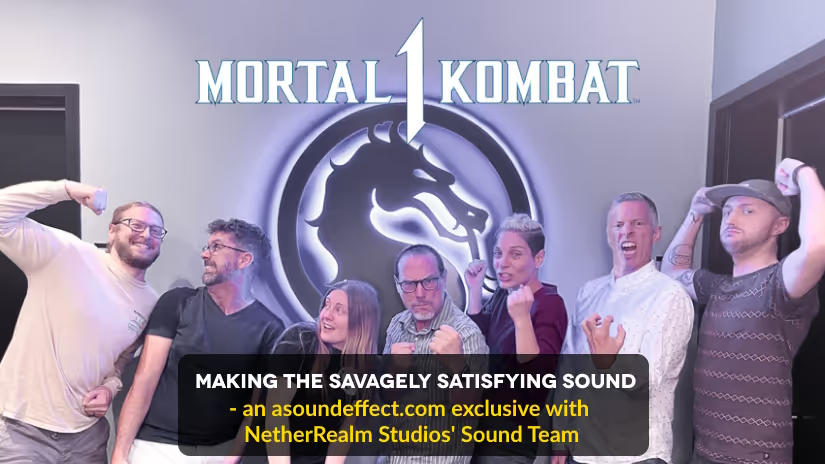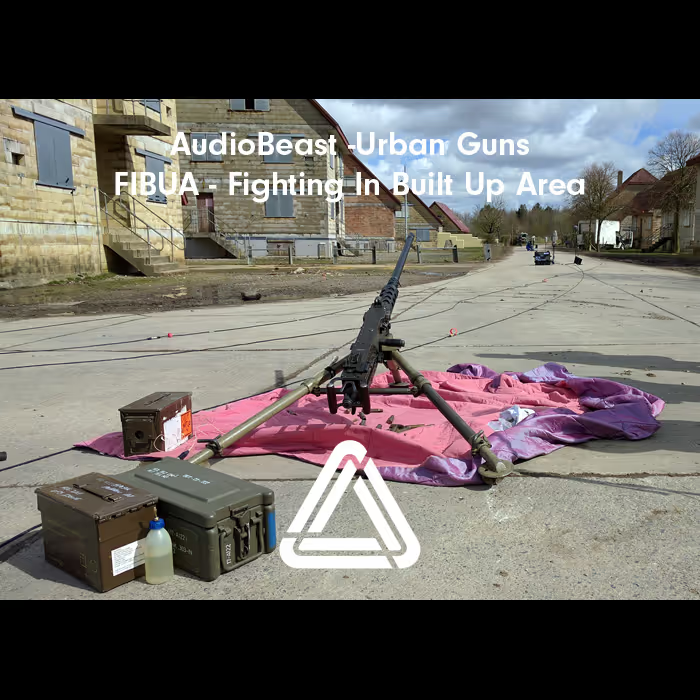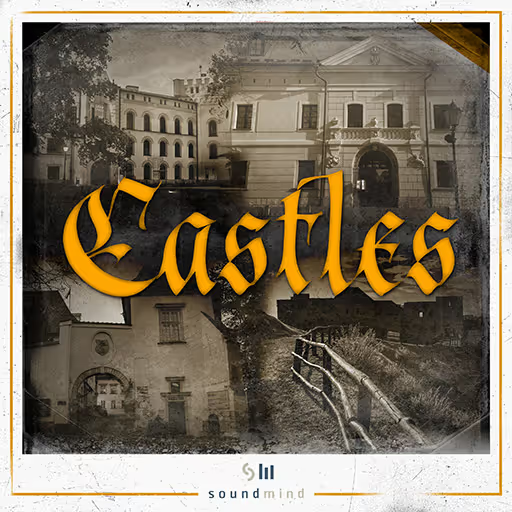Here, the sound team – led by NetherRealm Studios Director of Audio Rich Carle – talks about taking a fresh approach while still honoring Mortal Kombat's sonic legacy. They talk about recording new combat sounds and character reactions (even using an EMF microphone!), designing a unique sonic identity for each character, mixing the fast-paced game so it sounds sharp and clear, and so much more!
“Mortal Kombat!” That iconic shout from the 90’s TV commercial is like a call to arms for fight gamers. Crack your knuckles, choose your main character, and kick your opponent’s butt!
This long-running game franchise has just gotten its second reboot – Mortal Kombat 1 (developed by NetherRealm Studios and published by Warner Bros. Games), available now on PS5, Xbox Series X/S, Nintendo Switch, and PC – but still retains all the charm that made the original great. And by “charm” I mean those blood-soaked and brutal finishing moves!
Here, Rich Carle: Audio Director at NetherRealm Studios, Dan Forden: Audio Director at Warner Bros. Games – Chicago, Matt Swanson: Senior Sound Designer at NetherRealm Studios (WB Games), Shaun Gallagher : Senior Sound Designer at NetherRealm Studios, George Hufnagl: Senior Sound Designer at NetherRealm Studios (WB Games), and Angela Geiss: Associate Sound Designer for NetherRealm Studios (WB Games) talk about the sonic updates they made for this reboot, what new sounds they recorded for the gore, how they approached the sound of characters’ special moves, finishing moves, and efforts and reactions, how they handled the mix so that the fights felt satisfying, sharp, and focused, and the creative and technical challenges they faced in making the sound of Mortal Kombat 1.
Mortal Kombat 1 – Official Launch Trailer
Mortal Kombat 1 is a rebirth of the Mortal Kombat Universe created by the Fire God Liu Kang. What did this mean for you in terms of sound? (Was it a complete overhaul of the game franchise’s sound? Did you pay homage to Mortal Kombat games of the past?)
Rich Carle (RC): From a sound perspective, we did significantly change our core audio hits for this game, clarifying them and making them more impactful for this new universe. We put a lot of time into making sure that the size and shape of the impacts correspond well to the amount of damage a character takes, as well as the visual reaction they have to each hit. The vast majority of sounds are custom-crafted for Mortal Kombat 1’s roster and environments, but there are plenty of nods to the past if you listen for them.
Matt Swanson (MS): Liu Kang’s universe is more peaceful and grounded than past games and we translate this to the sound design. For example, the UI is comprised of organic recordings, such as wood, fire, and metal, as opposed to building those sounds using synthetic techniques.
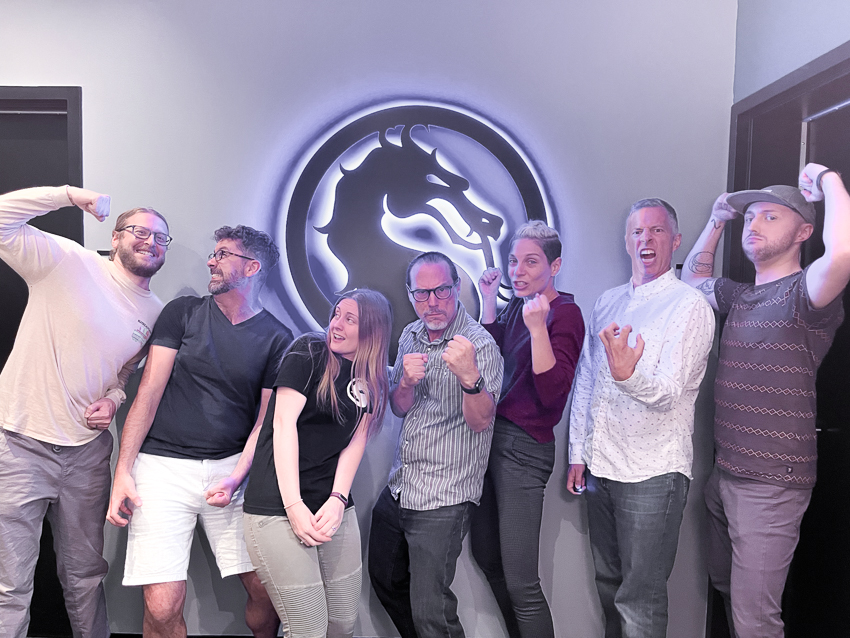
…the UI is comprised of organic recordings, such as wood, fire, and metal, as opposed to building those sounds using synthetic techniques.
Across Mortal Kombat 1, we made subtle nods to the sound of games past. The squiggly delay on Scorpion’s rope spear throw, the impacts of the bombs clinking on the floor in the Cyrax Kameo Fatality, and even the sound of the character select cursor was pitch matched to the cursor from the original Mortal Kombat.
Shaun Gallagher (SG): Mortal Kombat 1’s audio is equal parts a reinvention and reprise of beloved characters and landscapes, while also refining and honing in on what we as a team considered Mortal Kombat’s “sonic identity.” We often had conversations surrounding ways that we wanted characters to remain identifiable, grounded, and more natural sounding than previous titles, while simultaneously paying homage to and updating iconic sounds. It was a unique challenge to combine these principles to match the new visual aesthetic, but it afforded us a lot of opportunities to push the envelope and improve upon the franchise’s audio in ways we’ve always wanted.

Just watching the trailer, the fights are absolutely brutal and gory! Can you talk about your process of creating the hand-to-hand combat sounds – from the impacts to the resulting gore?
MS: With the amount of ways to inflict damage on your opponent, we create several categories of impacts. Face hits, body blows, magic, and bladed and blunt weapons all need to sound unique yet remain recognizable as a successful hit. By carefully mixing these layers with character-specific sound design, body impacts have more crunch, face hits have more squish, and blade hits sound sharp and painful. Combined with our ducking system, we ensure that each hit punches through the mix.
We approached the increased level of detail by capturing a variety of new source material; from large tubs of soapy noodles to dried orange peels and more.
SG: Early on in development, we noticed how much more detailed the gore, dismemberment, bone breaks, and X-Ray visuals were compared to past games. We approached the increased level of detail by capturing a variety of new source material; from large tubs of soapy noodles to dried orange peels and more. We then edit and process our recordings with both cinematics and gameplay in mind, which nets us an immense custom library to pull from. Ultimately, this allows the game’s more graphic moments to sound appropriate, cohesive, and unbelievably cool.
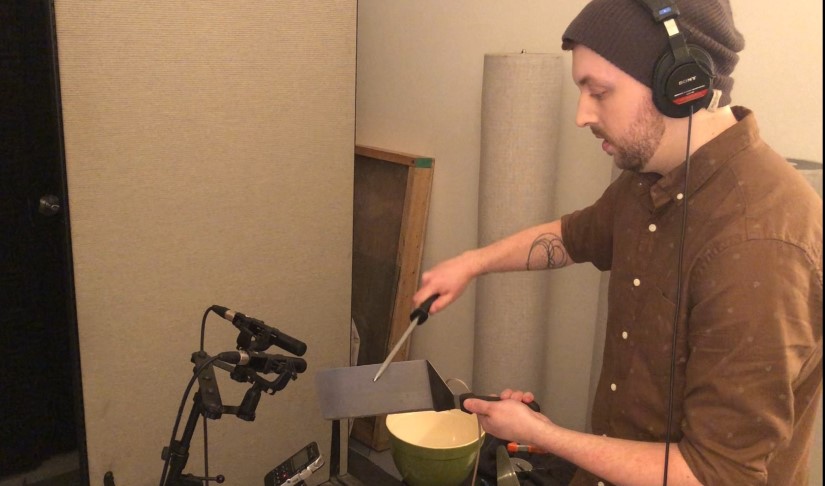
Does each character have their own unique library of hits? Or do you use some basic hits/impacts for multiple players?
Dan Forden (DF): We have a general core library of impacts and blocks. These are used for pretty much any simple punch or kick attack. However, any time a character has some sort of weapon or magic attack, the launching of the attack, as well as the impacts and blocks, will be custom since we want to represent the unique character of the attack.
MS: In addition to the shared core impacts and gore, each character has their own sonic profile designed to their unique move sets. Whether it’s Sub-Zero’s ice projectile or Shang Tsung’s skull fireball, each will be treated individually to stand out from the other characters.
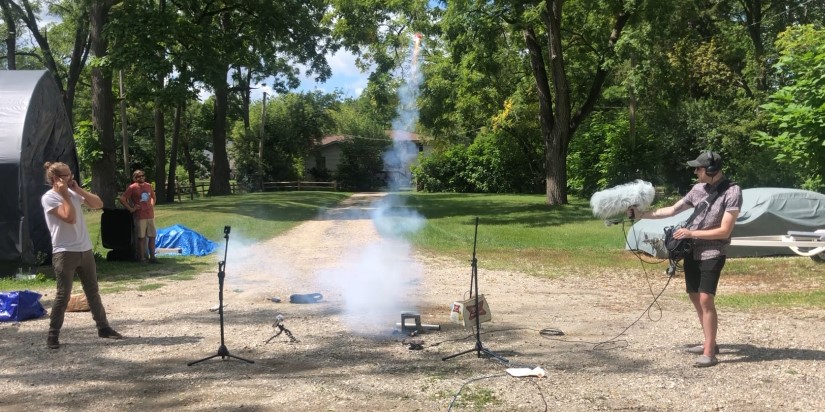
What went into the sound of the special attacks and finishing moves for each character?
MS: We create a palette of sound for each character that gives them a unique sonic identity. This includes a variety of impact layers, whooshes, and sustained drones. For example, Li Mei’s abilities are visually reminiscent of fireworks, so recording all kinds of different fireworks, processing those recordings, and layering them with synthesized material makes up a large portion of her sound palette.
Processing recordings from an EMF microphone called the Elektrosluch, we were able to…get unique and powerful synth-like tones and timbres…
SG: Drilling down into the organic aesthetic of Mortal Kombat 1, Raiden’s electric and thunder source palette for this game was made entirely without hardware/software synthesis. Processing recordings from an EMF microphone called the Elektrosluch, we were able to instead get unique and powerful synth-like tones and timbres that worked perfectly for his newly honed abilities. Cellophane rubs, paper manipulation, explosions, and glass recordings also helped round out the sound of the refreshed and reimagined Thunder God.
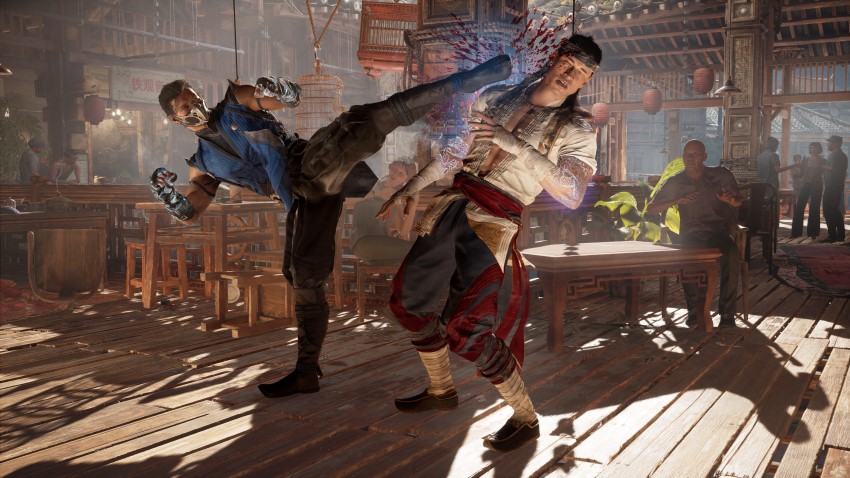
The character reaction sounds (grunts, oophs, efforts, yells, etc.) are as important as the hits and impacts for making the fighting feel satisfying. Can you talk about creating those reaction sounds? How many reactions did you record for each character? What went into selecting which one plays at a given moment during a fight?
George Hufnagl (GH): There is a broad range of vocal efforts needed in both the cinematic and gameplay modes in Mortal Kombat 1. To accommodate every possible move type – from throwing kicks, punches, and specials, to reacting to throws, chokes, and various damages – every character’s actor records a core set of over 50 different categories.
To accommodate every possible move type…every character’s actor records a core set of over 50 different categories.
From those voiceover sessions, we get 300-400 audio files to play with, of which about half are implemented into the core gameplay loop to conform to the game’s general pace.
For big moments, like the Fatal Blow’s X-Ray, we custom design the efforts and reactions, taking advantage of both real-time and baked-in effects, helping to sell the impact of those moments.
Finally, if it can’t be captured from the core set of effort categories, we’ll bring in the actor to perform vocalizations tailor-made to the character and game’s needs. We’re looking at you, Johnny Cage.
…we organize their efforts into a few dozen categories and use those events to sculpt the fights to any character combination.
Angela Geiss (AG): As for selecting which grunts to play at a given time, that comes down to how we want to choreograph each moment. From the actors’ sessions, we organize their efforts into a few dozen categories and use those events to sculpt the fights to any character combination. For example, Ashrah could be stabbing anybody in her Fatal Blow, from the giant General Shao to the stalwart Tanya, but both of them will scream in terror at the same moment as the scene climaxes. Whether it is live gameplay or a pre-rendered cinematic, we use each type of exert and reaction to craft the story of each moment of sweet, sweet Kombat.
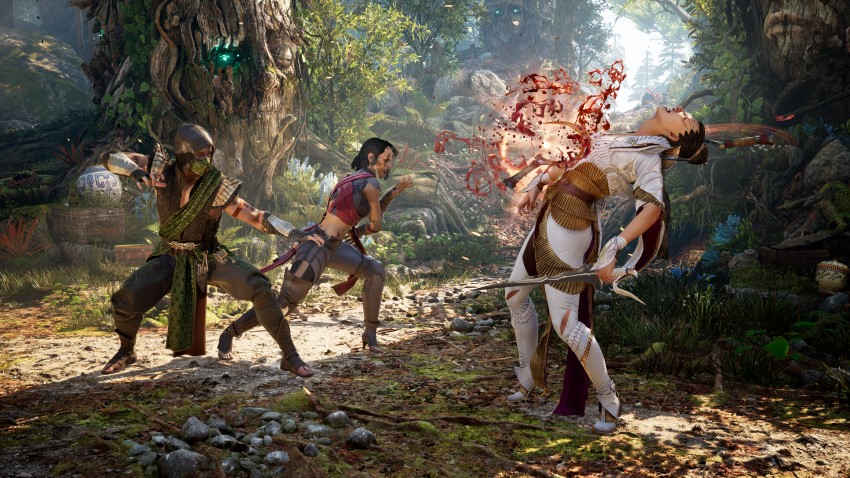
In terms of mix, how do you keep the fights sounding clean and sharp?
RC: There are no shortcuts to a good game mix. NetherRealm Studios maintains first-class sound design resources and a shared mixing space. The rooms are all acoustically treated and we’re currently using SAM Genelec speakers as primary monitors. We calibrate these rooms regularly and choose target levels for various aspects of the game like speech, ambience, and music.
Over the course of several months, the team would spend a few hours each week systematically reviewing and balancing each character…
Once the game starts to finalize, and enough characters are complete, we start mixing in earnest. Over the course of several months, the team would spend a few hours each week systematically reviewing and balancing each character – move by move, level by level, across all game modes. It’s a slow, careful process that spawns discussion and revisions as well as level adjustment.
Mortal Kombat 1 also makes use of side-chain compressors more than our previous titles ever did and I think that really helped put a nice sheen on our mix overall. This allows gameplay-critical sounds to pop through better when the fighting gets intense, while music and environmental audio are more present when fighting is more sporadic. It’s a very light treatment, and I hope players feel it in the mix like we do.
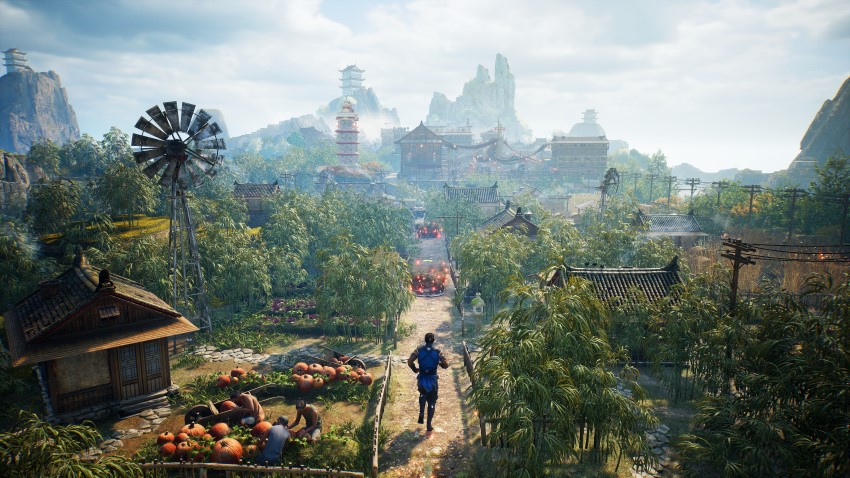
What were some of your biggest technical challenges on the sound of MK1?
RC: Mortal Kombat 1 was built on a brand-new engine. This choice gave us opportunities we never had before – particularly in the realm of technical audio systems. Our core and gameplay programmers had to rebuild many systems from scratch, which did present a more challenging workflow, but our new tools have been coming along nicely and are already much better than when we started.
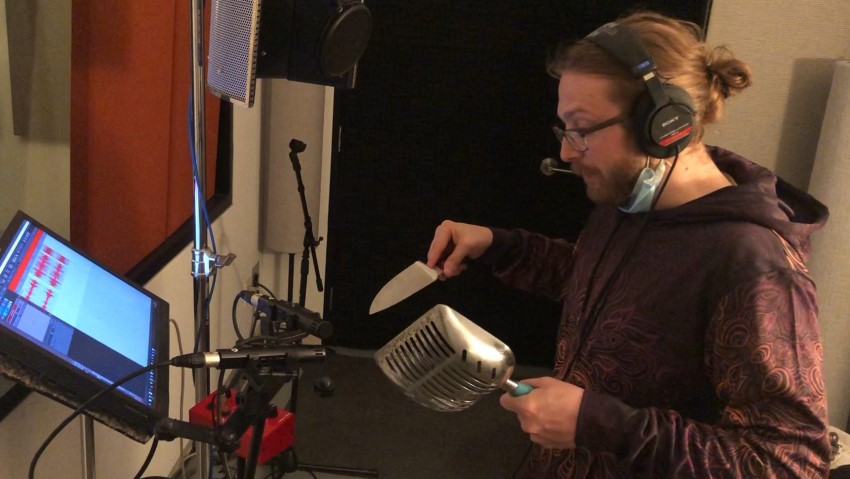
What were some of your biggest creative challenges on the sound of MK1?
RC: Creatively, we always struggle trying to figure out what we can change and what is sacred ground. We want to make a game that casual players can pick up and just think, “Hey, sounds cool.” For the players who love Mortal Kombat games and have played multiple versions, we want them to feel like they are coming home. We want them to instantly recognize their favorite characters and the universe, but still feel intrigued by all the changes and hopefully dig in to find some of the deep cuts.
…dried-out tangerine peels, a piece of wet rubber mattress, pasta shells, and cracking cedar planks gave us a ton of new material to process…
DF: One thing that has jumped out at us over the course of developing this game is how incredibly fast it is. It really is a lot faster than Mortal Kombat 11, which means we have to make sounds that speak as quickly as possible. It can be difficult to create interesting sounds when there is very little time for those sounds to “speak.” This is a huge challenge for the sound designers, but they took it on and delivered big time.
MS: Going into Mortal Kombat 1, we already had a big variety of fruit, vegetable, and slime recordings, so finding new material for gore was challenging. However, it turns out that some dried-out tangerine peels, a piece of wet rubber mattress, pasta shells, and cracking cedar planks gave us a ton of new material to process (and wasn’t nearly as messy!).
Overall, what are you most proud of in terms of your sound work on MK1?
RC: For me, it has to be the mix. I think this is the best Mortal Kombat has ever sounded. All the sound ingredients are fresh and complement each other as they are driven by the gameplay. Of course, if the players disagree, we have given them more control over their own sound experience by including more volume sliders to more audio categories than ever. Players can tweak the mix the way they want it, and it will automatically save to their profile.
DF: I agree that the mix sounds great. Also, the individual and unique sounds that the sound designers created are some of the best we’ve ever had in any Mortal Kombat game. Additionally, the fact that we covered pretty much everything in the game that needs sound is a big accomplishment. Sometimes we don’t know what’s in the game that needs to have sound, and we get unpleasantly surprised when we see something in a shipped game that doesn’t have sound. It doesn’t happen a lot, thankfully.
When each character’s sounds feel like they could have been created by the same sound designer we know we have a unified and identifiable aesthetic.
MS: Rich and Dan called it out already but the tight mix and the unique character sound effects. When each character’s sounds feel like they could have been created by the same sound designer we know we have a unified and identifiable aesthetic.
AG: Echoing what was said above, it was definitely the clarity of vision and execution stylistically for the sound of this game. I joined the team a chunk of the way through development, but they gave such clear direction and feedback that it was easy to catch on to what Mortal Kombat 1 is and what it is not.
SG: Not only did we push the mix, sonic palette, and technical capabilities of audio for this project in new ways, but we grew immensely as an audio team. We strived to collaborate, review, and iterate on our personal and peer work more than we ever have, and I think that can be heard throughout the game’s audio in spades. At the end of the day, if both new and returning Mortal Kombat fans alike can wince or giggle at the same skull chomp and brain slurp sounds, then we’ve done our jobs effectively.
A big thanks to for giving us a behind-the-scenes look at the sound of Mortal Kombat 1 and to Jennifer Walden for the interview!
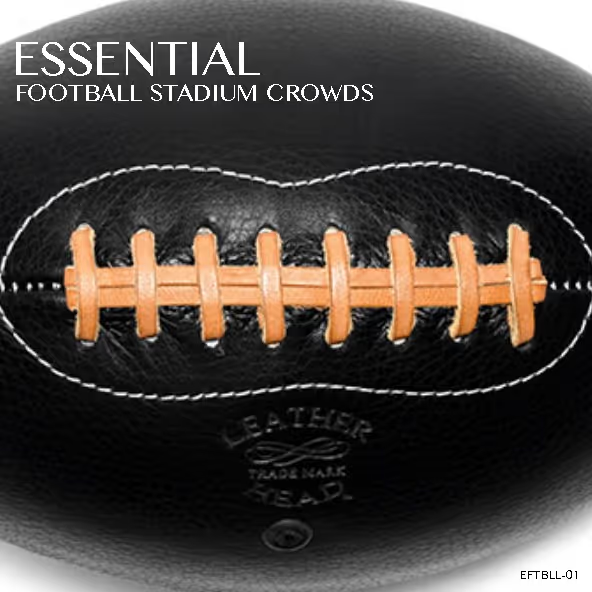 Football Stadium & Crowd Ambiences – Cheers, Goals, Whistles & Field Action for Film, TV & GamesTsunami Sound Wave45,00 $
Football Stadium & Crowd Ambiences – Cheers, Goals, Whistles & Field Action for Film, TV & GamesTsunami Sound Wave45,00 $

